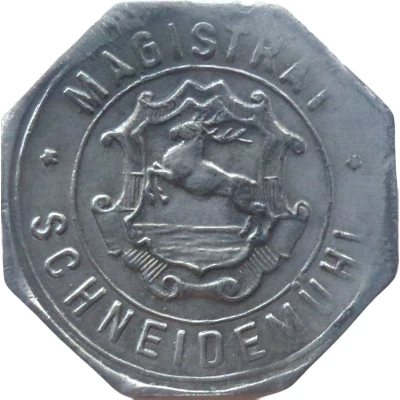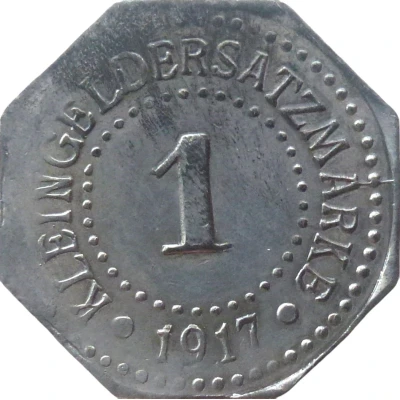


© Willem63 (CC BY-NC-SA)
1 Pfennig - Schneidemühl
1917 year| Zinc | 1.2 g | 16.3 mm |
| Issuer | City of Schneidemühl (Posen) (Prussian province of Posen) |
|---|---|
| Emperor | William II (Wilhelm II) (1888-1918) |
| Type | Standard circulation coin |
| Year | 1917 |
| Value | 1 Pfennig (0.01) |
| Currency | Mark (1914-1924) |
| Composition | Zinc |
| Weight | 1.2 g |
| Diameter | 16.3 mm |
| Thickness | 1.1 mm |
| Shape | Octagonal (8-sided) |
| Technique | Milled |
| Orientation | Medal alignment ↑↑ |
| Demonetized | Yes |
| Updated | 2024-10-04 |
| Numista | N#338761 |
|---|---|
| Rarity index | 94% |
Reverse
Solid line rim, legend surrounding pearl circle with denomination centered
Script: Latin
Lettering:
KLEINGELDERSATZMARKE
1
● 1917 ●
Edge
Plain
Interesting fact
The 1 Pfennig coin from Schneidemühl (Posen) issued in 1917 is interesting because it was produced during a time of great economic and political turmoil in Germany. The country was facing severe inflation, and the government was forced to introduce new coinage made of cheaper materials, such as zinc, to replace the traditional silver and gold coins. This coin, made of zinc and weighing only 1.2 grams, is a tangible example of the economic challenges faced by Germany during World War I.